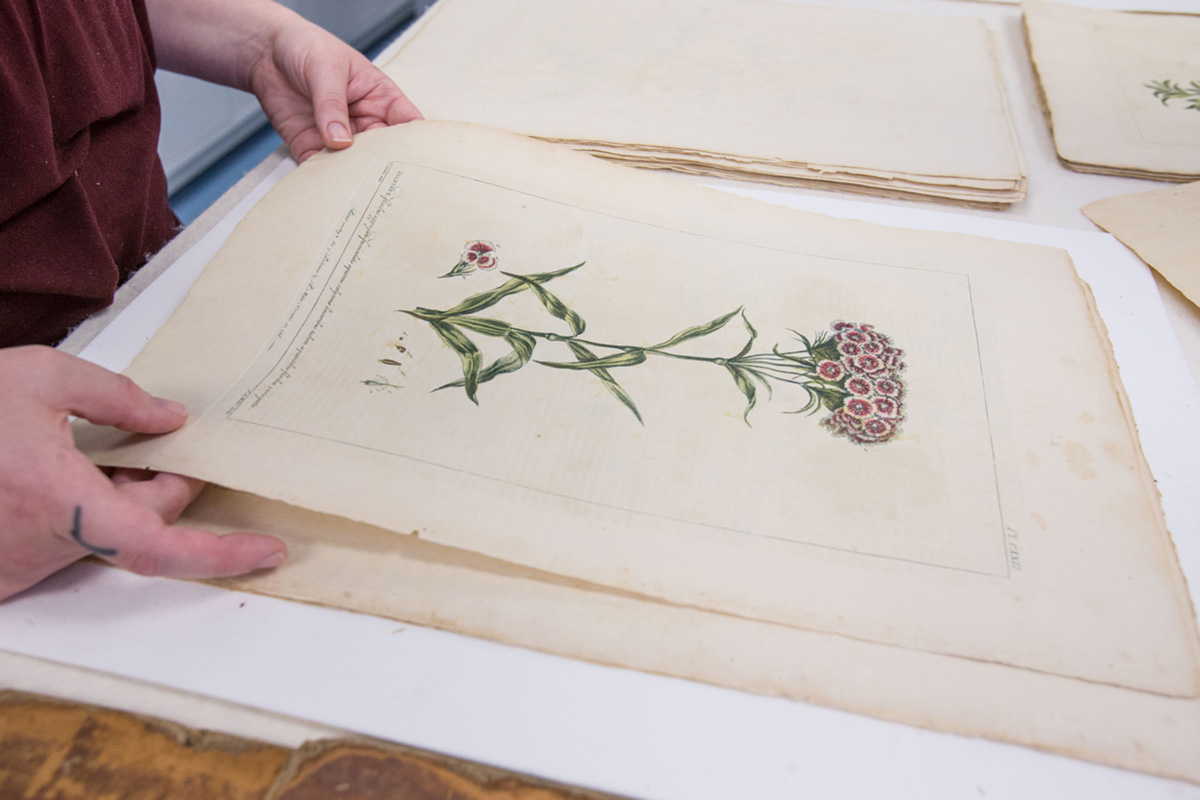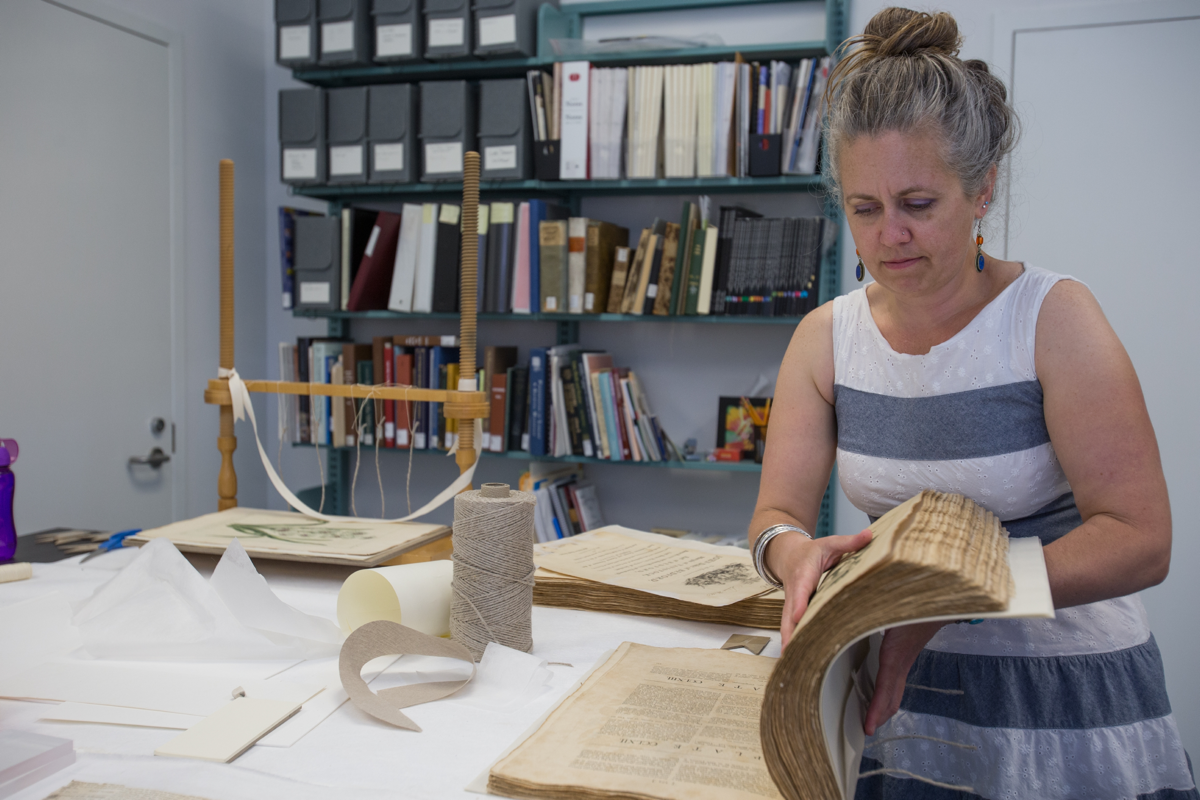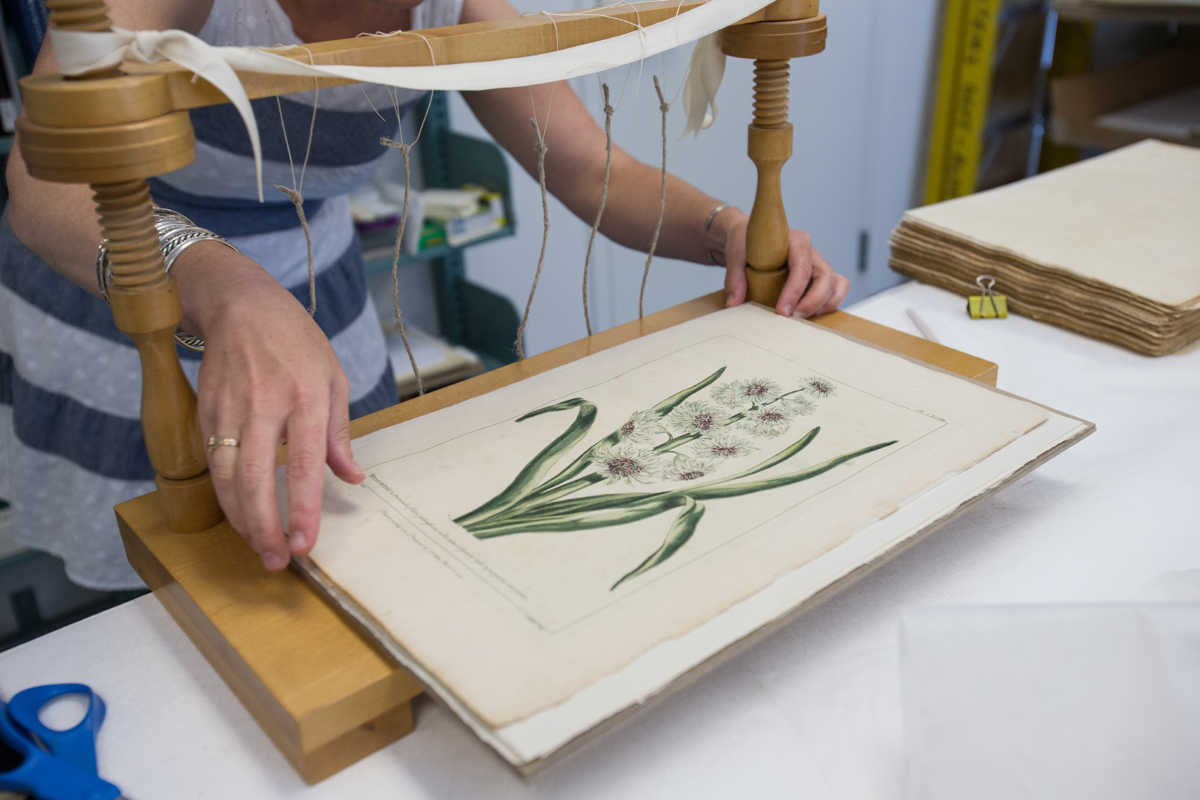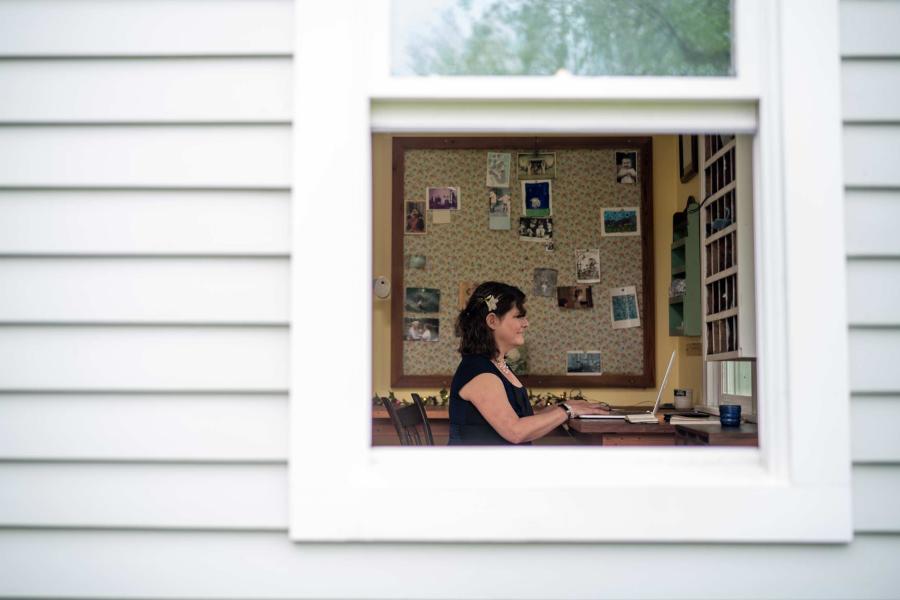Inside a sophisticated lab across the University of Virginia’s Grounds from her library office, Eliza Gilligan wages a quiet war against time. As the book conservator for University Library Collections, Gilligan is tasked with protecting some of UVA’s most valuable historical resources. Her latest restoration project pieces together an important part of Virginia’s past. A two-volume botanical guide, “Figures of the Most Beautiful, Useful Plants Described in the Gardener’s Dictionary,” written by Philip Miller and published in 1760, is part of a large collection of rare Colonial-era books that were donated to UVA in the late 1970s and early 1980s.
The text is accompanied by hand-colored plates, quite a few of which were created by the noted botanical illustrator, George Dionysius Ehret. It was so costly to reproduce these paintings that the book was issued in installments over the course of five years. “Landon Carter waited until the whole book came out and ordered it as one publication,” Gilligan said. “My guess, just from looking at the binding, is that the publisher just did a really cheap binding and then mailed it to the colonies.” She added that it was clear that Carter never had the book rebound because the edges of the pages were untrimmed, uneven and crudely stitched together. This, combined with the ravages of time and insects, meant a very precise repair process was needed. Essentially, the book had to be disassembled, cleaned and then put back together again, retaining as much of the original material as possible. Gilligan started by carefully separating the pages and sorting them in to those that could be washed as a group and those that had to be washed individually.
Pages that contain only text and no watercolor images, for instance, are hardier because of the carbon black printing ink that was used to create them. “The ink probably has gum, carbon black and a few other secret ingredients to keep it sticky,” Gilligan said. “Because it’s printing ink, it’s got to stick to the type on the printing press and then offset onto the paper. It was specially designed to be really sticky and really permanent.” And since this ink isn’t water-soluble, Gilligan was able to fully submerge the text pages and rinse away impurities that can accelerate deterioration. “I put the text pages in a bath of deionized water and then in an alkaline bath with calcium hydroxide. That adds a little alkaline reserve to the paper,” she said.
Deionized water is purified water that has had all of its mineral ions removed. Gilligan uses it because it gently cleans the pages without adding any new and potentially damaging elements to the paper. Calcium hydroxide is a base, so the “alkaline reserve” it adds helps to make the paper more resistant to acid damage. “As paper ages over time, the acids build up in it and what we’re trying to do is leach those out,” Gilligan said. “What often happens is, I’ll soak something in deionized water and the water’s pH will go from 7, which is neutral, to 5.5, which is pretty acidic. The water starts out clear and looks like ice tea when you’re done. So you can really see how much acid was in the paper.” The process for washing the pages with watercolor illustrations is even more delicate. First, blank blotter paper is dampened and set aside. Then the back of the illustrated page is sprayed with a one-part water, one-part ethanol solution. The hand-colored plate is then laid on top of the damp blotter for 20 minutes before being transferred to another stack of clean blotters. Capillary action from the water in the damp blotter draws the impurities out of the hand-colored plate.

Some book binders have a superstition about starting from the back and then by the time you put on the title page, you’re doing really well and everything falls into place.
“You put the illustrated page on the damp blotters so that the paper gets wet, but it doesn’t need to go under water. The ink will get soluble, but it won’t wash away because it’s just sitting in place,” Gilligan said. As long as the hand-colored plate is carefully removed from the damp blotter, the watercolors won’t run and the ink will re-dry in the same place. Once each page is cleaned and dried, Gilligan mends them with handmade Japanese paper of matching weight and begins the slow process of stitching them back together.
“Some book binders have a superstition about starting from the back and then by the time you put on the title page, you’re doing really well and everything falls into place,” she said.
Not wanting to tempt fate, Gilligan stuck with this old tradition, working backward from the end of volume II before beginning work on volume I. With a book as damaged as the botanical guide, total reassembly also meant a certain degree of recreation. Any new material Gilligan adds to help with that recreation must meet very specific requirements. In addition to mimicking the original look and feel of the book’s design, any new leather binding or paper must also enhance the quality. “They have to look right and they have to be chemically superior to the time and place,” she said. After several years at the Smithsonian and almost seven at UVA, Gilligan has a large Rolodex of vendors who can help her find almost any unique book-binding material she needs.
For this book, she ordered new high-quality leather from England and had the marbled paper from the cover recreated by a paper marbler she knows in Pennsylvania. The end result is a book with all the features of Carter’s original copy and the durability to last as a resource for many generations. “We’re making a great investment in repair with the expectation that these books are permanently held for cultural heritage and research,” Gilligan said.













